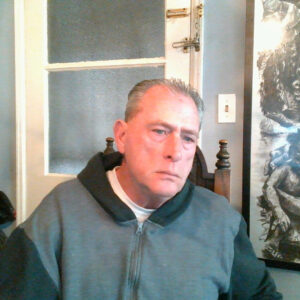Understanding Mental Health Awareness Ribbons
Mental health awareness ribbons are powerful symbols that aim to raise awareness and show support for individuals facing mental health challenges. These ribbons serve as a visual representation of solidarity and understanding. Each color holds a specific meaning and represents a different aspect of mental health.
Symbolism of Ribbon Colors
The green ribbon is internationally recognized as the symbol for mental health awareness. It is worn to show support for mental health and can also be worn in memory of a loved one [1]. The green ribbon serves as a conversation starter, prompting people to ask about its significance and contributing to raising awareness about mental health [1]. By wearing the green ribbon, individuals help break down the stigma surrounding mental health and encourage open conversations about this important topic.
In addition to the green ribbon, there are several other colored ribbons associated with mental health awareness, each representing a specific aspect:
| Ribbon Color | Symbolism |
|---|---|
| Yellow | Suicide prevention (Wikipedia) |
| Teal | Post-traumatic stress disorder (PTSD) awareness |
| Purple | General mental health awareness and support |
| Silver | Brain disorders and mental illnesses |
| Orange | Self-harm awareness |
| Blue | Anxiety and depression awareness |
| White | Mental health conditions in children and adolescents |
These ribbons serve as a visual reminder of the importance of mental health awareness and the need for support and understanding for those facing mental health challenges. By wearing or displaying these ribbons, individuals can express empathy, show solidarity, and contribute to the ongoing conversation surrounding mental health.
Understanding the symbolism behind mental health awareness ribbons is essential in promoting open conversations, breaking stigma, and fostering a society that supports mental health. It is crucial to raise awareness about mental health and encourage discussions to ensure that individuals feel comfortable seeking help and support when needed. For more information on why mental health awareness is important, check out our article on why is mental health awareness important.
The Green Ribbon for Mental Health
When it comes to raising awareness for mental health and mental illness, the green ribbon takes center stage as a powerful symbol. The green ribbon is recognized as the international symbol of mental health awareness, serving as a visual representation of support and solidarity for individuals experiencing mental health challenges [2]. Let’s explore the significance of the green ribbon and the benefits of wearing it.
Significance of the Green Ribbon
The green ribbon represents a collective effort to break the stigma surrounding mental health and promote open conversations about mental well-being. By wearing the green ribbon, individuals show their support for those affected by mental health issues and their commitment to creating a more inclusive and compassionate society.
The green color itself holds significance. Green is often associated with growth, renewal, and hope. By choosing the green ribbon, advocates aim to convey a message of resilience, healing, and the potential for positive change. It serves as a reminder that mental health is an essential part of overall well-being and should be treated with the same importance as physical health.
Benefits of Wearing the Green Ribbon
Wearing the green ribbon can have several meaningful benefits in promoting mental health awareness. Here are a few key advantages:
- Initiating Conversations: The green ribbon serves as a conversation starter, prompting people to ask about its significance and providing an opportunity to discuss mental health openly. This can lead to increased awareness, understanding, and empathy among individuals.
- Breaking Stigma: By wearing the green ribbon, individuals contribute to breaking the stigma associated with mental health. It sends a message that it is okay to talk about mental health, seek support, and prioritize self-care.
- Raising Awareness: The visibility of the green ribbon helps to raise awareness about mental health issues on a broader scale. It encourages others to learn more about mental health, seek resources, and support mental health initiatives in their communities.
To further support mental health initiatives, green ribbon pin badges are available for purchase. These pin badges not only raise awareness but also contribute to charity work focused on mental health and prevention. By purchasing and wearing these badges, individuals can make a tangible impact and support the cause.
In conclusion, the green ribbon represents a powerful symbol of mental health awareness. By wearing the green ribbon, individuals can contribute to breaking the stigma, encouraging conversations, and promoting a more empathetic and inclusive society. Let us remember that mental health matters and that together, we can create a supportive environment for everyone.
Mental Health Awareness Initiatives
Mental health awareness initiatives play a crucial role in educating the public, reducing stigma, and promoting support for individuals with mental health conditions. Two significant initiatives in this regard are Mental Health Awareness Month and the involvement of mental health foundations.
Mental Health Awareness Month
Mental Health Awareness Month, first recognized in 1949, takes place every year in May. The month-long observance aims to educate the public about mental illness, raise awareness about research and treatments, reduce stigma, and celebrate recovery. This annual event provides an opportunity to shine a spotlight on mental health and emphasize its importance in overall well-being.
One of the primary goals of Mental Health Awareness Month is to help individuals with mental health conditions overcome stigma and access the treatment they need. By raising awareness and fostering understanding, the month-long observance allows individuals and their loved ones to better understand mental health conditions and connect with support networks. This awareness can be particularly helpful for those who may have felt isolated or hesitant to seek help in the past.
Mental Health Awareness Month also serves as a platform for fundraising, outreach, and awareness events. These activities contribute to research, fund treatment options, and connect advocates to improve mental health care in the future. By bringing together individuals, organizations, and communities, Mental Health Awareness Month strives to make a significant impact on mental health awareness and support.
Role of Mental Health Foundations
Mental health foundations play a vital role in supporting mental health awareness and advocacy efforts. These organizations work tirelessly to provide resources, support networks, and educational opportunities for individuals with mental health conditions and their families. They also play a crucial role in funding research, treatment options, and mental health initiatives.
By collaborating with healthcare professionals, researchers, and community organizations, mental health foundations help drive positive change in the field of mental health. Their efforts contribute to the development of effective treatments, improved access to care, and advancements in mental health policy.
Through their programs and initiatives, mental health foundations strive to promote understanding, increase awareness, and break down the barriers associated with mental health conditions. They work towards reducing stigma, providing support, and empowering individuals to seek the help they need.
By actively participating in mental health awareness initiatives and supporting mental health foundations, individuals can contribute to a society that values and prioritizes mental well-being. Together, these initiatives and organizations are making a difference in the lives of individuals with mental health conditions and shaping a more compassionate and inclusive society.
To learn more about mental health in the workplace and strategies for promoting a healthy work environment, visit our article on mental health in the workplace.
Advocacy and Support for Mental Health
The advocacy and support for mental health have been instrumental in raising awareness and promoting understanding of mental health issues. High-profile advocacy and global recognition of the green ribbon as a symbol for mental health awareness have played a significant role in advancing this cause.
Impact of High-Profile Advocacy
High-profile advocacy, encompassing the support of celebrities, public figures, and influential organizations, has had a profound impact on mental health awareness. By openly sharing their personal experiences and speaking out about mental health challenges, these advocates have helped to break down the stigma surrounding mental health issues and create a more supportive environment [3].
The involvement of high-profile advocates has not only increased public awareness but has also encouraged individuals to seek help and support. Through their influential platforms, these advocates have sparked conversations, challenged stereotypes, and promoted empathy and understanding. Their efforts have played a crucial role in shifting public attitudes towards mental health, making it easier for individuals to discuss their own struggles and seek the assistance they need.
Global Recognition of the Green Ribbon
The green ribbon has become a globally recognized emblem of mental health awareness. It serves as a beacon of hope, support, and understanding for individuals affected by mental health issues. The green ribbon campaign, which originated in the 1990s, aimed to encourage open conversations about mental health and break down barriers that prevented people from seeking help and support.
Several organizations have played significant roles in popularizing the green ribbon as a symbol for mental health awareness. The National Mental Health Association (now known as Mental Health America) in the United States and the Mental Health Foundation in the United Kingdom have been instrumental in advocating for mental health support and resources. These organizations have utilized the green ribbon as a symbol for Mental Health Awareness Month in the U.S. and Mental Health Awareness Week in the U.K., respectively, encouraging individuals, organizations, and communities to wear the ribbon as a sign of solidarity and support for mental health awareness.
The global recognition of the green ribbon demonstrates the collective effort to address mental health issues and promote open conversations. It serves as a visual reminder that mental health matters and that support is available for those who need it. By wearing the green ribbon, individuals can show their support, contribute to the ongoing advocacy for mental health, and help reduce the stigma associated with mental health challenges.
Advocacy and global recognition of the green ribbon have been crucial in driving mental health conversations forward and promoting understanding and support on a global scale. With continued efforts and increased awareness, the collective impact of these initiatives can help create a more inclusive and compassionate society for individuals facing mental health challenges.
Get your question answered now.
The Evolution of Mental Health Symbols
As society has become more aware of the importance of mental health, various symbols have emerged to represent this crucial issue. One of the most recognized symbols is the green ribbon, which has become a globally recognized emblem of mental health awareness. The green ribbon serves as a beacon of hope, support, and understanding for those affected by mental health issues.
Adoption of the Green Ribbon
The adoption of the green ribbon as a symbol for mental health awareness can be traced back to the 1990s. During this time, the green ribbon campaign emerged with the aim of encouraging open conversations about mental health and breaking down barriers that prevented people from seeking help and support. The National Mental Health Association (NMHA), now known as Mental Health America (MHA), played a pivotal role in the adoption of the green ribbon as a symbol for mental health awareness. Founded in 1909, MHA has a long-standing history of advocating for mental health support and resources in the United States.
Role of Advocacy Groups
Advocacy groups have played a significant role in popularizing the green ribbon as a symbol of mental health awareness. The Mental Health Foundation, a UK-based charity dedicated to promoting mental health awareness and well-being, has been instrumental in this effort. Since 2001, the Mental Health Foundation has used the green ribbon as its symbol for Mental Health Awareness Week, encouraging individuals, organizations, and communities to wear the ribbon as a sign of solidarity and support for mental health awareness.
Another influential advocacy group is Time to Change, a social movement aimed at breaking the stigma surrounding mental health issues in the UK. Time to Change has adopted the green ribbon as a symbol for mental health awareness and has been actively involved in promoting open conversations about mental health and challenging negative stereotypes.
High-profile advocacy, including support from celebrities, public figures, and influential organizations, has also played a significant role in raising the visibility of the green ribbon as a symbol of mental health awareness. The involvement of these high-profile advocates has helped break down the stigma surrounding mental health issues, promote open conversations, and encourage understanding and support on a global scale.
The adoption of the green ribbon and the efforts of advocacy groups have been instrumental in raising awareness about mental health and promoting open dialogue. By wearing the green ribbon, individuals can show their support for mental health awareness and contribute to the ongoing movement to break the stigma associated with mental health issues.
Promoting Open Conversations
In the realm of mental health, promoting open conversations is crucial for breaking down the barriers and stigma surrounding this important topic. The green ribbon, a symbol of mental health awareness, plays a significant role in sparking dialogue and increasing awareness about mental health.
Sparking Dialogue on Mental Health
Wearing the green ribbon serves as a conversation starter, prompting people to ask about its significance and leading to discussions about mental health. It acts as a visual cue, inviting others to inquire and providing an opportunity to share information and personal experiences. The act of wearing the ribbon can serve as a sign of strength and support for those struggling with mental health issues, encouraging them to share their stories and seek help.
By wearing the green ribbon, individuals can actively participate in raising awareness about mental health and promoting open conversations. It sends a powerful message that mental health is a topic that should be openly discussed and destigmatized. The ribbon acts as a visual reminder that it is okay to talk about mental health, encouraging others to join the conversation and share their own experiences.
Breaking Stigma through Awareness
One of the primary goals of mental health awareness initiatives is to break down the stigma associated with mental health conditions. Wearing the green ribbon helps to challenge outdated beliefs and stereotypes, fostering an environment of acceptance and understanding. The visibility of the ribbon prompts people to question its meaning, leading to discussions about mental health and challenging misconceptions.
The green ribbon has gained global recognition as a symbol of mental health awareness. Individuals who wear the ribbon not only show their support but also play an active role in educating others about the importance of mental health. By sharing personal stories and experiences associated with wearing the green ribbon, people can further contribute to breaking the stigma surrounding mental health.
As the green ribbon continues to serve as a catalyst for open conversations and awareness, it is vital to remember that mental health discussions should extend beyond wearing a ribbon. It is essential to actively listen, validate, and support those struggling with mental health issues. By promoting dialogue and spreading awareness, we can create a more inclusive and compassionate society that values mental well-being.
To explore more about mental health awareness and its significance, you can visit our article on why is mental health awareness important and find inspiration from mental health awareness quotes. Additionally, if you are interested in learning about the color associated with mental health awareness, you can read our article on mental health awareness color. Together, we can create a supportive environment that prioritizes mental health, both in personal lives and in places such as the workplace.
Resources
- [1]: https://www.mentalhealth.org.uk/our-work/public-engagement/green-ribbon-mental-health-awareness
- [2]: https://en.wikipedia.org/wiki/Awareness_ribbon
- [3]: https://greenribbons.co.uk/about/the-green-ribbons-journey-as-a-symbol-for-mental-health-awareness/
Did You Know? According to WHO, one out of every seven teens is struggling with some sort of mental illness.










